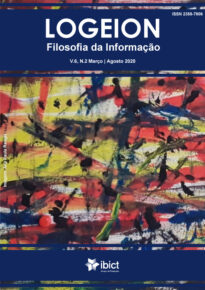-
Conselho Profissional de Arquivologia: percepção dos arquivistas sobre a sua criação
- Voltar
Metadados
Miniatura

Título
Conselho Profissional de Arquivologia: percepção dos arquivistas sobre a sua criação
Resumo
Buscou analisar as percepções dos profissionais arquivistas sobre a elaboração de um Conselho Profissional de Arquivologia em âmbito nacional. Sobre os procedimentos metodológicos, distinguem-se as seguintes etapas: 1) Levantamento de literaturas bibliográficas; 2) Pesquisa documental sobre os Conselhos de Classe; 3) Desenvolvimento e aplicação de um questionário com o propósito de conhecer as percepções dos Arquivistas acerca do assunto. Após os envios eletrônicos, obtiveram-se 43 questionários respondidos; 4) Análise das informações obtidas no questionário. Enquanto principais resultados, percebeu-se, que: 95,3% dos entrevistados são a favor de um Conselho Profissional de Arquivologia, enquanto 4,7% não tem uma opinião formada sobre o tema. Dentre os principais pontos positivos para a criação de um Conselho, destacaram-se: impedir que ocorra o exercício ilegal da profissão; e ter uma representação política da classe. Sobre os negativos, sobressaíram-se: possibilidade de baixo índice de associativismo, dada a baixa quantidade de profissionais formados; e pagar anuidade e encargos.
Relacionado à Obra
Sumário
Artigos
Período
mar./ago.
Volume
6
Número
2
Páginas
157-177
Ano
Link Principal
Link do Artigo
Categoria
Local
Outro Idioma
Title/Título/Titre
Professional Archivology Council: archivists' perception of its creation
Abstract/Résumé/Resumen
It sought to analyze the perceptions of archivist professionals about the creation of a Professional Archivology Council at the national level. Regarding the methodological procedures, the following steps are distinguished: 1) Survey of bibliographic literature; 2) Documentary research on Class Councils; 3) Development and application of a questionnaire with the purpose of knowing the perceptions of Archivists on the subject. After electronic submissions, 43 questionnaires were answered; 4) Analysis of the information obtained in the questionnaire. As main results, it was noticed that: 95.3% of the interviewees are in favor of a Professional Council of Archivology, while 4.7% do not have an opinion on the subject. Among the main positive points for the creation of a Council, the following stood out: preventing the illegal exercise of the profession; and have a political representation of the class. Regarding the negatives, the following stood out: the possibility of a low rate of association, given the low number of trained professionals; and pay annuity and charges.
key words/Mots-clés/Palabras clave
Archivist | Associativism | Professional Council of Archivology | Professional regulation




